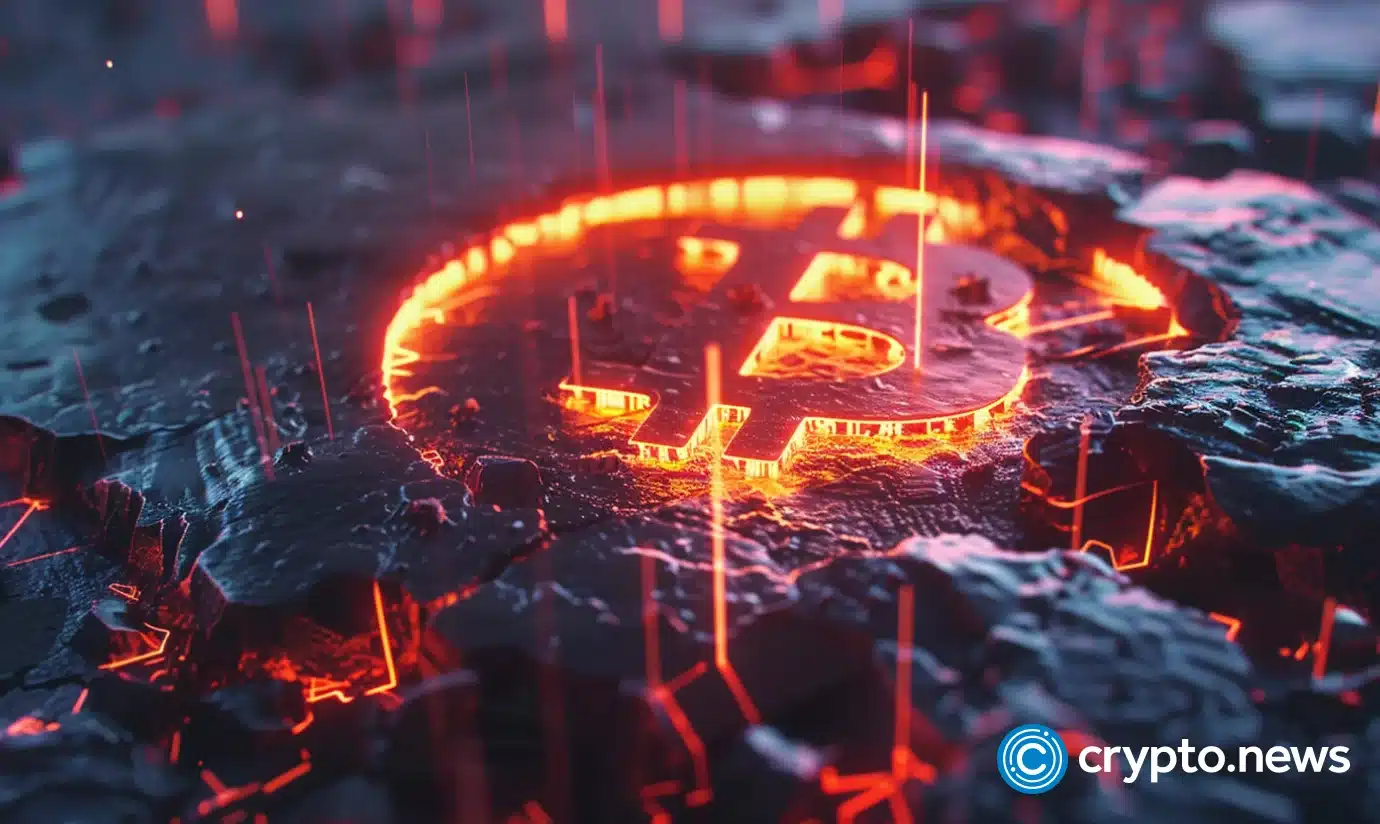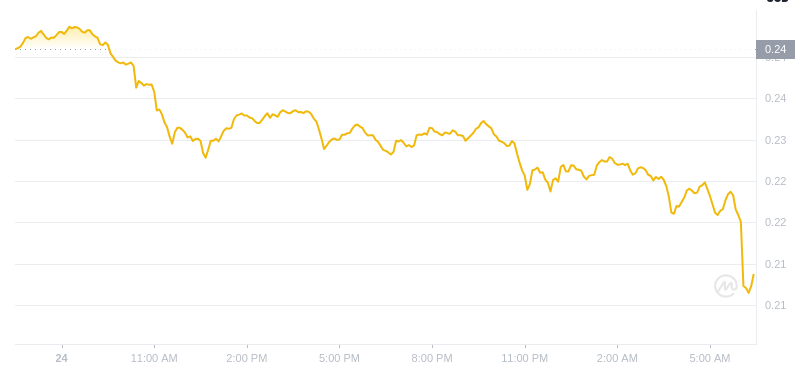
Speaking to crypto.news in an interview, Andy Fajar Hardika, CEO of Loka Mining, discussed the evolution of decentralized finance (DeFi) on the Bitcoin network.
Loka Mining の CEO、Andy Fajar Hardika 氏は crypto.news のインタビューで、ビットコイン ネットワークにおける分散型金融 (DeFi) の進化について語りました。
On April 19, 2024, Bitcoin mining rewards were slashed in half. Mining a block will now generate only 3.125 BTC, compared to the previous 6.25 BTC. Although the Bitcoin halving happens every four years or so, this year, it's really got industry participants talking about how the reduced rewards will affect the mining economy.
2024 年 4 月 19 日、ビットコインのマイニング報酬は半分に削減されました。ブロックのマイニングでは、以前は 6.25 BTC しか生成されませんでしたが、現在は 3.125 BTC しか生成されません。ビットコインの半減期は約 4 年ごとに起こりますが、今年は業界関係者の間で報酬の減少がマイニング経済にどのような影響を与えるかについて話題になっています。
With each halving event, mining firms have to adapt to a lower-margin environment. Cash-strapped firms usually exit the market or merge with bigger firms. Unlike the earlier halving events in 2016 and 2020, the 2024 halving event may result in a slew of consolidation and defaults.
半減期が訪れるたびに、鉱山会社は利益率の低い環境に適応しなければなりません。資金難に陥った企業は通常、市場から撤退するか、より大きな企業と合併する。 2016年と2020年の以前の半減期イベントとは異なり、2024年の半減期イベントでは多数の企業統合やデフォルトが発生する可能性があります。
Enter Runes and Ordinals, concepts that are revolutionizing the DeFi landscape on the Bitcoin network.
ビットコインネットワーク上の DeFi 環境に革命をもたらしている概念である、ルーンと序数を入力してください。
Runes, like Ethereum's ERC-20 standard, introduce fungible tokens to the Bitcoin blockchain, while Ordinals bring NFTs directly onto the network. As the premiere cryptocurrency, this goes a long way in broadening the possibilities of what Bitcoin can offer beyond simple transactions.
ルーンは、イーサリアムの ERC-20 標準と同様に、代替可能なトークンをビットコイン ブロックチェーンに導入しますが、オーディナルは NFT をネットワークに直接もたらします。プレミア暗号通貨として、これはビットコインが提供できるものの可能性を単純な取引を超えて広げる上で大いに役立ちます。
With Runes and Ordinals, Bitcoin is finding new ways to close the gap with Ethereum, which has largely been hailed as the king of DeFi. However, nothing is without its challenges. Scalability issues and concerns over blockchain bloat loom large, echoing past impediments in the industry.
ルーンと序数によって、ビットコインは主にDeFiの王として称賛されているイーサリアムとの差を埋める新たな方法を見つけようとしています。しかし、課題のないものはありません。スケーラビリティの問題とブロックチェーンの肥大化に対する懸念は、業界における過去の障害を反映して大きく迫っています。
Still, the birth of protocols like Runes and Ordinals shows that Bitcoin can support more diverse decentralized applications. Miners, in return, are able to offset the halving's effect on revenue.
それでも、Rune や Ordinals のようなプロトコルの誕生は、ビットコインがより多様な分散型アプリケーションをサポートできることを示しています。その見返りとして、マイナーは収益に対する半減期の影響を相殺することができます。
Hardika, who leads a cryptocurrency mining firm, shared his insights on the matter.
仮想通貨マイニング会社を率いるハルディカ氏は、この問題についての洞察を共有した。
How do you perceive Bitcoin's evolving role in the DeFi space, given its recent advances like the Runes protocol and the impact it's had on miner revenues and transaction fees?
Runesプロトコルのようなビットコインの最近の進歩と、それがマイナーの収益と取引手数料に与えた影響を考慮して、DeFi分野で進化するビットコインの役割をどのように認識していますか?
Bitcoin lacks programmability but has the strongest Lindy effect and has proven to become the de facto store of value. I personally believe these characteristics are driving Bitcoin to be the "mother chain," attracting new protocols that are blooming on Bitcoin's L2 or sidechain.
ビットコインにはプログラム可能性はありませんが、最も強力なリンディ効果があり、事実上の価値の保存場所となることが証明されています。私は個人的に、これらの特性がビットコインを「マザーチェーン」に押し上げ、ビットコインのL2またはサイドチェーンで開花している新しいプロトコルを引き付けていると信じています。
In your opinion, can Bitcoin position itself as a competitor to Ethereum in decentralized finance, or do you foresee a different outcome?
あなたの意見では、ビットコインは分散型金融においてイーサリアムの競合相手として位置づけられるのでしょうか、それとも別の結果を予想していますか?
I think what we will see in the end is not rivalry, but rather collaboration — where chains will be "fused" and abstracted away to a point that regular users don't really care or need to understand which chain they're currently using.
私たちが最終的に目にするのは、ライバル関係ではなくむしろコラボレーションだと思います。そこではチェーンが「融合」され、通常のユーザーが実際にどのチェーンを使用しているのかをまったく気にしたり、理解する必要がなくなるところまで抽象化されます。
With Runes driving transaction fees to new heights, how do you think Bitcoin can balance rewarding miners with keeping transactions affordable and accessible? Are high fees hindering Bitcoin's adoption for smaller transactions?
ルーンによって取引手数料が新たな高みに引き上げられる中、ビットコインはマイナーへの報酬と、取引を手頃な価格でアクセスしやすい状態に保つこととのバランスをどのようにとれると思いますか?高額な手数料が小規模取引へのビットコインの採用を妨げているのでしょうか?
As Bitcoin transitioned from a P2P e-cash system to a Store of Value, I believe the high transaction fee on Bitcoin L1 is important. It serves as a trade-off for the security budget the network needs to maintain. This is where L2s take part in scaling the network and adding programmability to Bitcoin. From a user's perspective, solutions like Lightning or ICP with their ckBTC enable Bitcoin transaction fees to be reduced to just a few cents.
ビットコインが P2P 電子キャッシュ システムからストア オブ バリューに移行したため、ビットコイン L1 の高い取引手数料が重要であると私は考えています。これは、ネットワークが維持する必要があるセキュリティ予算とのトレードオフとして機能します。ここで、L2 がネットワークの拡張とビットコインへのプログラマビリティの追加に参加します。ユーザーの観点から見ると、ckBTC を備えた Lightning や ICP などのソリューションにより、ビットコインの取引手数料をわずか数セントまで削減できます。
Historically, Bitcoin has lagged behind Ethereum in DeFi applications. How likely is it that innovations like Runes and Ordinals will help Bitcoin close this gap? What are Bitcoin's advantages or challenges in this space?
歴史的に、ビットコインは DeFi アプリケーションにおいてイーサリアムに後れを取ってきました。 Runes や Ordinals のようなイノベーションが、ビットコインがこのギャップを埋めるのに役立つ可能性はどのくらいでしょうか?この分野におけるビットコインの利点または課題は何ですか?
Ordinals is basically fully on-chain NFT, parallel to ERC721, while Runes is essentially Fungible Tokens on Bitcoin, parallel to ERC-20. These are just early building blocks for Bitcoin programmability. While it's now possible to build an L1 primitive dApp, it's still very limited. I believe the actual use case would be like anchor points for the L2s to provide a full-blown DeFi app on Bitcoin. One significant advantage would be that we can unlock the massive Bitcoin TVL that is currently sitting in their holders' wallets.
Ordinals は基本的に完全にオンチェーン NFT であり、ERC721 と同様であり、Runes は基本的にビットコイン上の Fungible Tokens であり、ERC-20 と同様です。これらは、ビットコインのプログラマビリティの初期の構成要素にすぎません。 L1 プリミティブ dApp を構築できるようになりましたが、それでも非常に制限されています。実際のユースケースは、ビットコイン上で本格的な DeFi アプリを提供するための L2 のアンカー ポイントのようなものになると思います。大きな利点の 1 つは、現在所有者のウォレットに眠っている大量のビットコイン TVL のロックを解除できることです。
Some critics argue that protocols like Runes and Ordinals could lead to blockchain bloat and slower transaction times. What are your thoughts on these drawbacks, and how do they compare to Ethereum's scalability challenges?
一部の批評家は、Rune や Ordinals のようなプロトコルはブロックチェーンの肥大化とトランザクション時間の遅延につながる可能性があると主張しています。これらの欠点についてはどう思いますか?また、それらをイーサリアムのスケーラビリティの課題とどう比較しますか?
History tends to repeat itself. A few years back, we had CryptoKitties, the first gamified NFT on the Ethereum network, consuming 13% of all transactions in the Ethereum network. This ignited the discussion about network scalability and eventually sparked many upgrades and the rise of L2s on Ethereum.
歴史は繰り返す傾向があります。数年前、イーサリアムネットワーク上で最初のゲーム化されたNFTであるCryptoKittiesがあり、イーサリアムネットワーク内のすべてのトランザクションの13%を消費しました。これがネットワークのスケーラビリティに関する議論に火をつけ、最終的には多くのアップグレードとイーサリアム上の L2 の台頭のきっかけとなりました。
Do you expect a similar trend?
同様の傾向が予想されますか?
I believe we see parallels between Runes and Ordinals, which are now taking significant block space and contributing a significant amount to the network's security budget. As an indirect result, there are now more than 50 Bitcoin Layers or sidechains trying to solve Bitcoin's scalability. And of course, just like startups, most of them will eventually die down or become dormant — but those with strong utility and actual use cases will survive.
Runes と Ordinals の間には類似点が見られると思います。これらは現在、大量のブロック スペースを占有し、ネットワークのセキュリティ予算に多大な貢献をしています。間接的な結果として、現在では 50 を超えるビットコイン レイヤーまたはサイドチェーンがビットコインのスケーラビリティを解決しようとしています。そしてもちろん、スタートアップと同じように、そのほとんどは最終的には消滅するか休眠状態になりますが、強力な実用性と実際のユースケースを備えた企業は生き残ります。


 CFN
CFN Crypto Daily™
Crypto Daily™ DogeHome
DogeHome Crypto Daily™
Crypto Daily™ TheCoinrise Media
TheCoinrise Media Crypto Daily™
Crypto Daily™ DogeHome
DogeHome ETHNews
ETHNews Crypto Daily™
Crypto Daily™






















